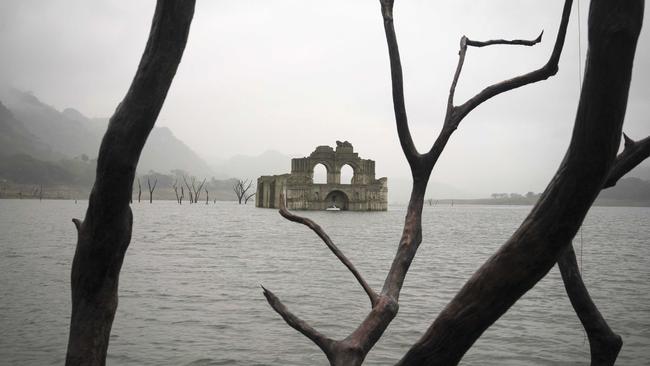16th century ‘Temple of Santiago’ emerges from drought affected reservoir
WELL, you don’t see this every day. A temple has emerged from a reservoir, exposing ancient ruins that have rarely been seen before.

AN ONGOING drought has uncovered something unusual 25 metres deep in a Mexican reservoir.
A 16th century church known as the ‘Temple of Santiago’ has emerged from the low water level in the Grijalva river. It is the second time a drop in the reservoir has revealed the church since it was flooded when the dam was completed in 1966. In 2002, the water was so low visitors could walk inside the church. Leonel Mendoza fishes every day in a reservoir surrounded by forest and mountains in the southern Mexico state of Chiapas, and in recent days has been ferrying curious passengers out to see the remains of the colonial era church. “The people celebrated. They came to eat, to hang out, to do business. I sold them fried fish. They did processions around the church,” Mendoza recalled. The church in the Quechula locality, in the south of the country was built by a group of monks headed by Friar Bartolome de la Casas, who arrived in the region in the mid-16th century. The church is 61 metres long and 14 metres wide, with walls rising 10 metres. The bell tower reaches 16 metres above the ground. “The church was abandoned due the big plagues of 1773-1776,” said architect Carlos Navarete, who worked with Mexican authorities on a report about the structure. It depended on the nearby monastery of Tecpatan, founded in 1564. Navarrete believes that based on architectural similarities, it is the work of the same builder at very nearly the same time. “It was a church built thinking that this could be a great population centre, but it never achieved that,” Navarrete said. “It probably never even had a dedicated priest, only receiving visits from those from Tecpatan.”



